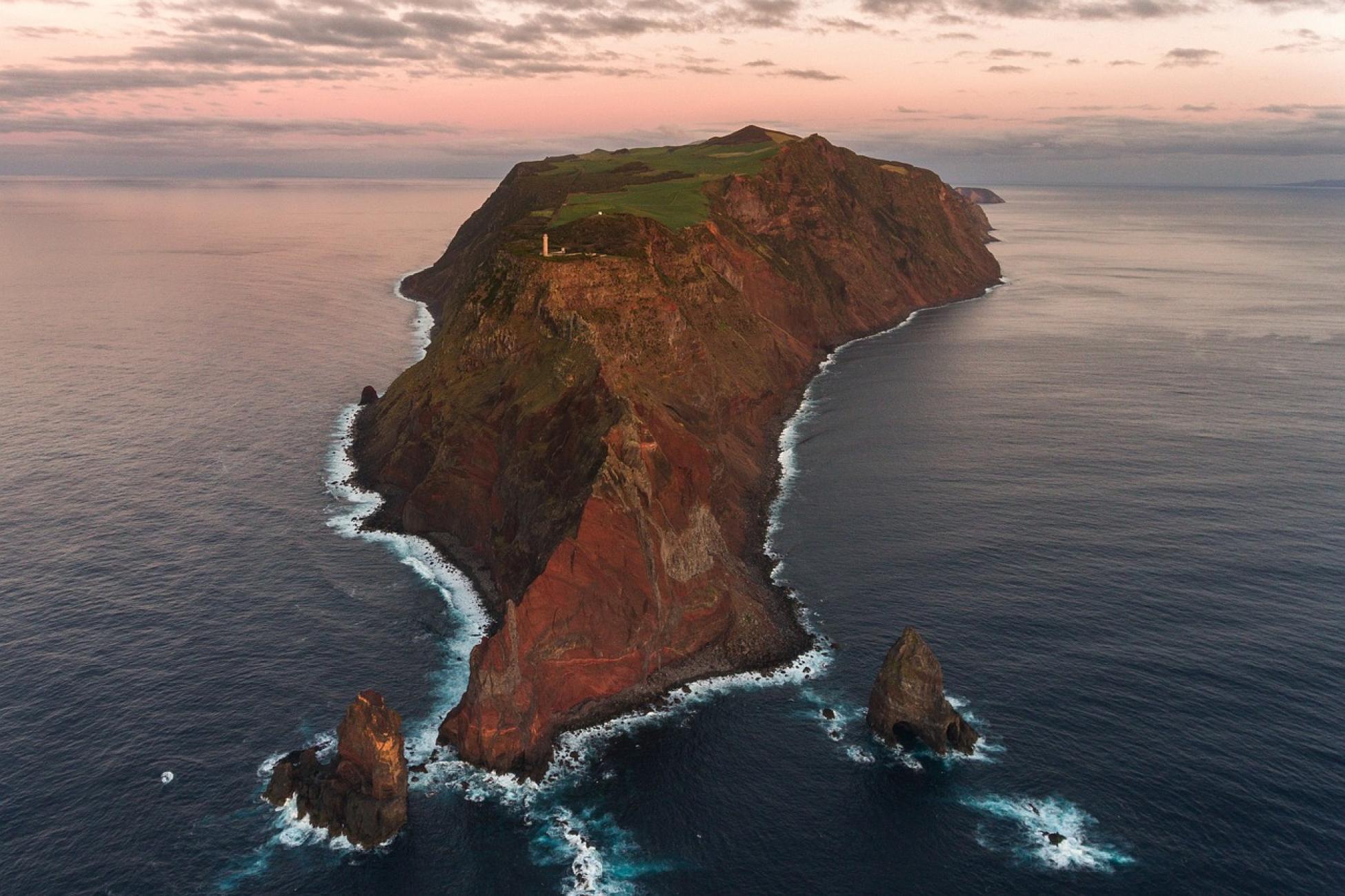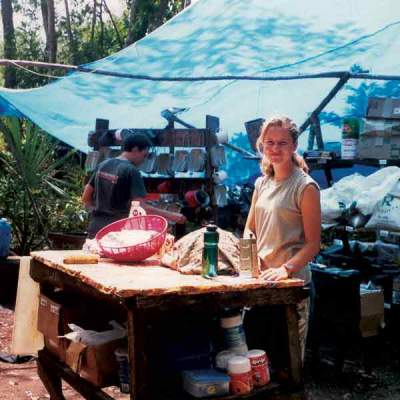As we made our way to the thermal baths, a 20-foot-long line stopped us outside the building. Even though it was past 8 p.m., people were standing outside, shivering in their mid-season jackets.
As we waited, we started chatting with a young woman in line. She explained that the baths of Dona Beija in the town of Furnas have become one of São Miguel Island's main attractions—but it hasn't always been this way.
"Up until a few years ago, we could just show up without a reservation," she told us. "Now, it's become unsustainable. Last year, we had to wait over two hours. Once you’re inside, you only hear people speaking in English."
For years, the Azores were overlooked, escaping—at least in part—the burdens of tourism thanks to their position in the middle of the Atlantic, just midway between Europe and America. That's now changed, with their isolation attracting nearly a million tourists every year shortly before the pandemic.
Wild beauty and rural surroundings give the archipelago a certain uncharted charm, setting it apart from the mass tourism of the nearby Madeira and Canary Islands. People come here for green pastures and ancient volcanoes; for trails and unspoiled beaches. It’s the pursuit of the great outdoors, of bucolic nature still free from massive hotels and crowds—the perfect location for outdoor enthusiasts.
Or at least, this is how the Azores have been marketed for many years. In 2015, when the local air company Sata lost its monopoly on the islands, low-cost connections with the rest of Europe started to pop up, followed soon after by new tourist flows. Given the sudden price drop, Sata Airlines began to look west, promoting the island as "the perfect stopover" while flying between Europe and North America. This new marketing campaign— which saw the launch of new direct flights from New York, Boston and Toronto—promotes a largely different tourism model. It’s the weekend-long holiday, already well established in mainland Europe thanks to the many low-cost airlines. It promotes fast-paced stays, where tourists drive around the main island of São Miguel, ticking off the same few tourist attractions.
"It’s a matter of making it sustainable; of attracting the right type of tourists on the islands."
But it doesn’t necessarily have to be that way. A few days later, while visiting the only climbing gym in São Miguel, I met a young climber from the island. She gave me some tips on the route I was trying to complete, as we started to talk about rock climbing in the Azores.
"There are just a few routes, and all of them have been set up by people coming from the mainland or expats," she said. "The fact is that it’s very expensive for us to get the material needed to open a new route. Some friends of mine from the island are doing just that, but they’re the exception."
She told me that currently there are only a few official climbing routes in São Miguel, and a few more in Terceira, Pico and São Jorge Island. But there could be many more. "It’s a matter of making it sustainable; of attracting the right type of tourists on the islands. And ideally, giving the locals the opportunity to take care of it," she said.
Outdoor activities like rock climbing, hiking or bikepacking, are just some of the many possible answers to the downfalls of the current model of tourism in the Azores. I personally don’t see any reason why the Azores shouldn’t be a prime destination for those seeking what is known in Norway as Friluftsliv. The term refers to a deep connection with nature, expressed by spending time in the outdoors. From hiking, kayaking, or simply sitting in the woods, Friluftsliv is about being outside. It’s not limited to a certain activity, but rather it’s the idea of de-stressing and finding peace in nature.
Locations like Canada, Scandinavia and New Zealand have for years promoted a tourism model that largely aligns with such ideas, attracting more conscious and sustainable travellers. Hiking up through the unmarked paths that cross the island, eventually reaching a lake carved into a dormant volcano or a natural hot spring, makes it clear that the islands are just the perfect location for such experiences. But in order to make it sustainable, continuous action must be taken to preserve the islands’ wilderness and promote slow tourism.
I see the Azores at a crossroad. On one side, there’s the quick money and mass tourism of Madeira and the Canary Islands; on the other, a slower approach, a leap of faith and a conscious use of natural resources.
"It’s what everyone wants, really. Most people here have no interest in working in a big resort or in a ticket booth 40 hours a week," the young climber confided. "We all want the same thing, both locals, tourists, and expats: we just want to enjoy the island.’
Add this article to your reading list





